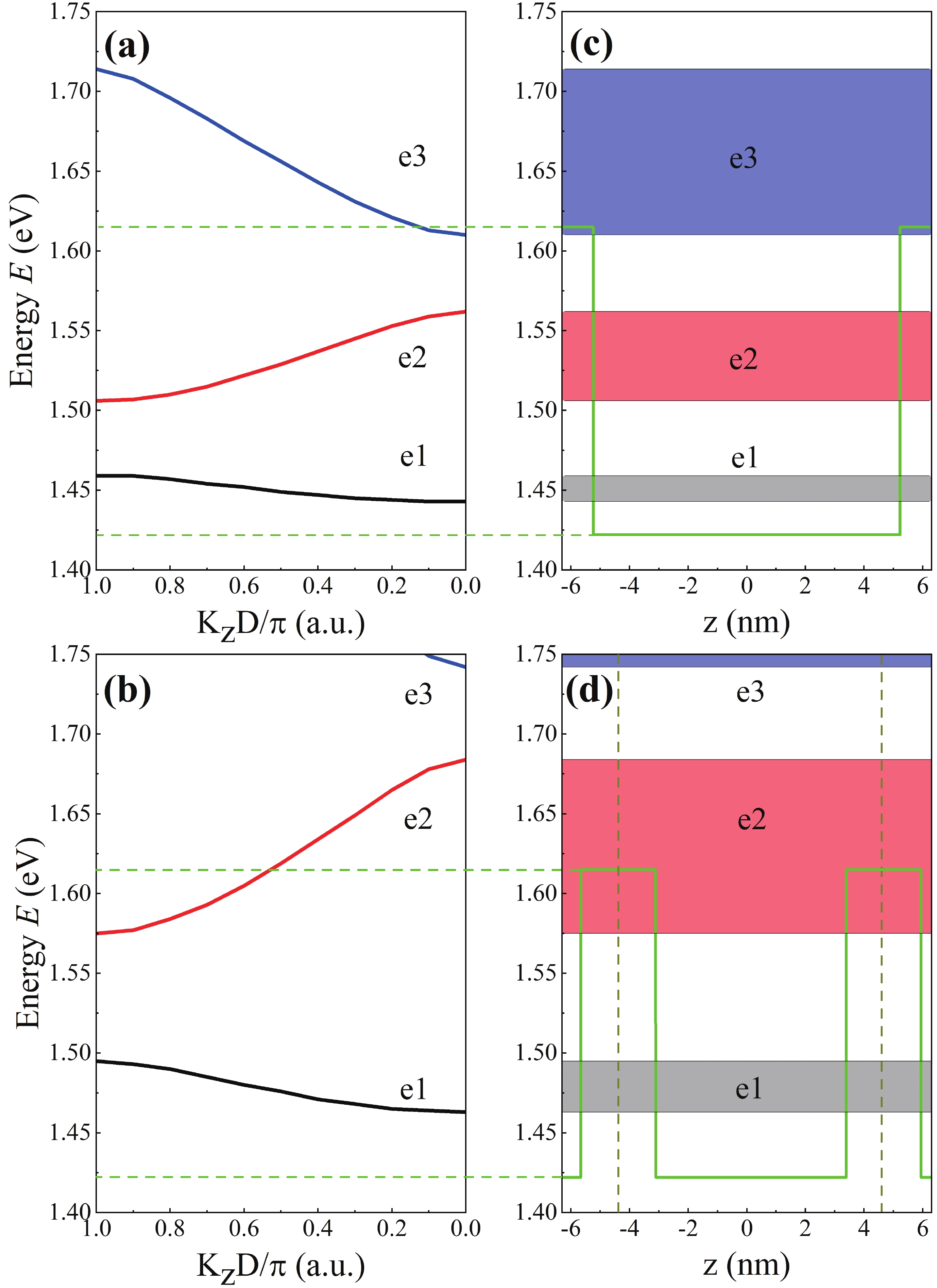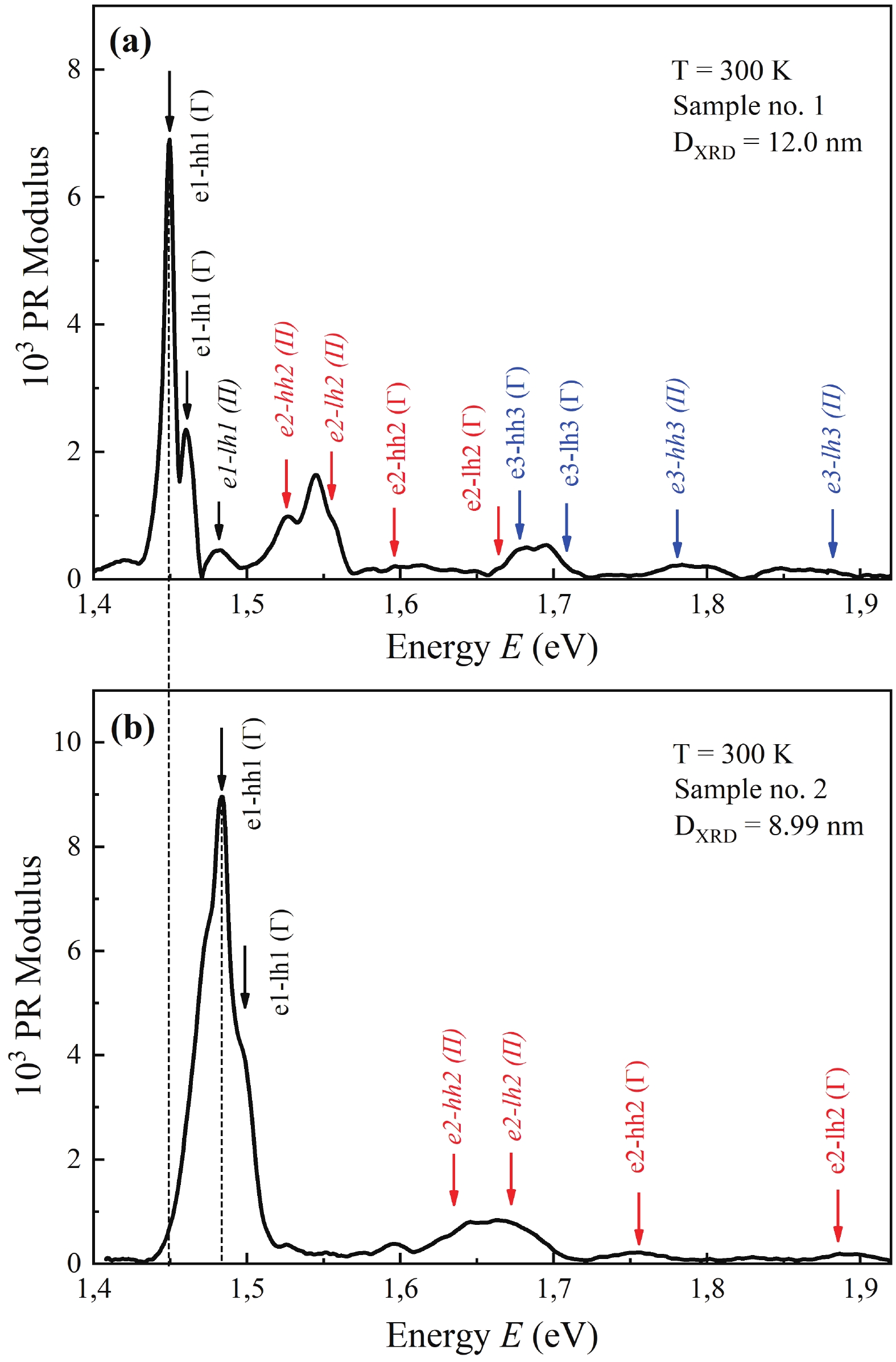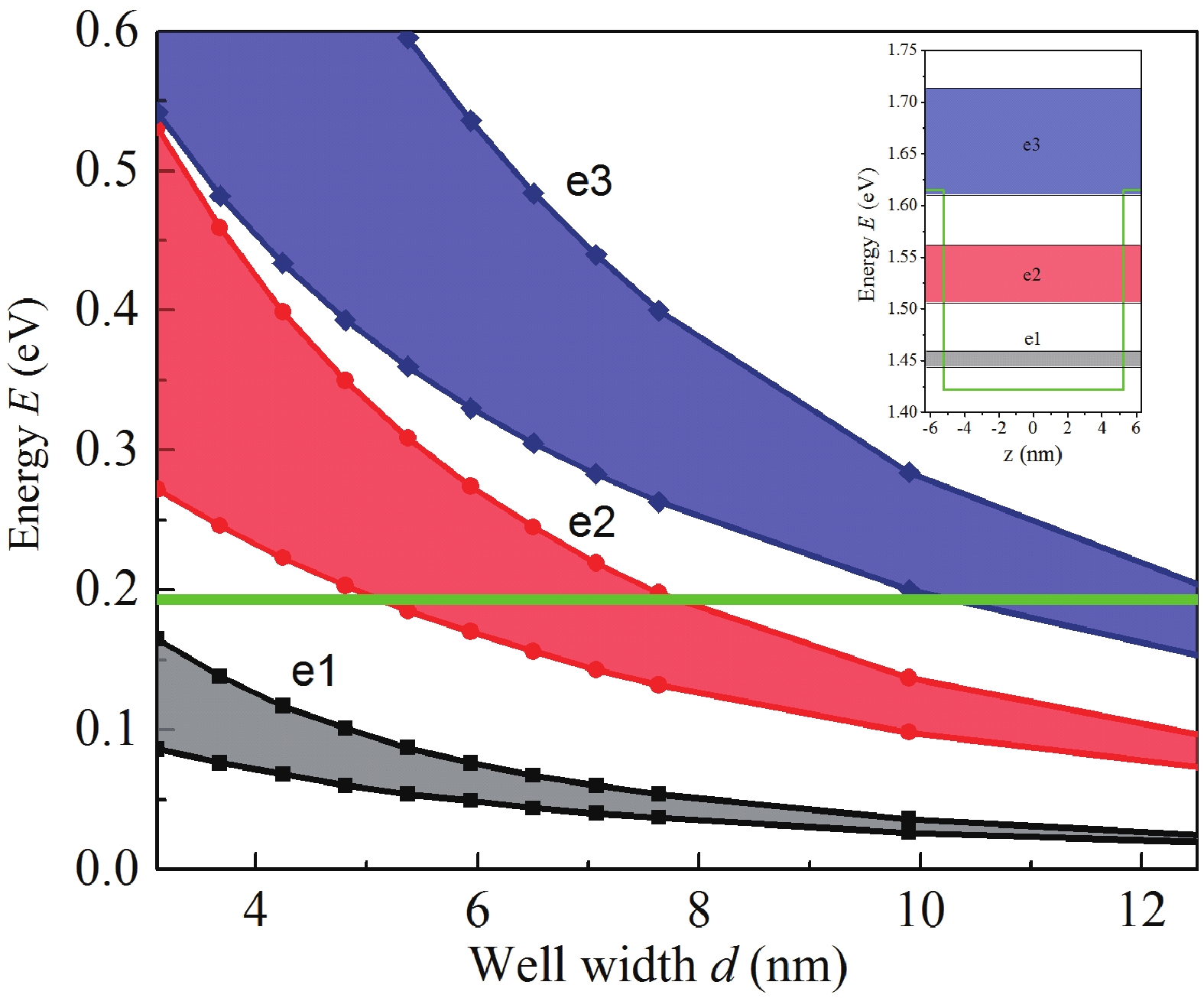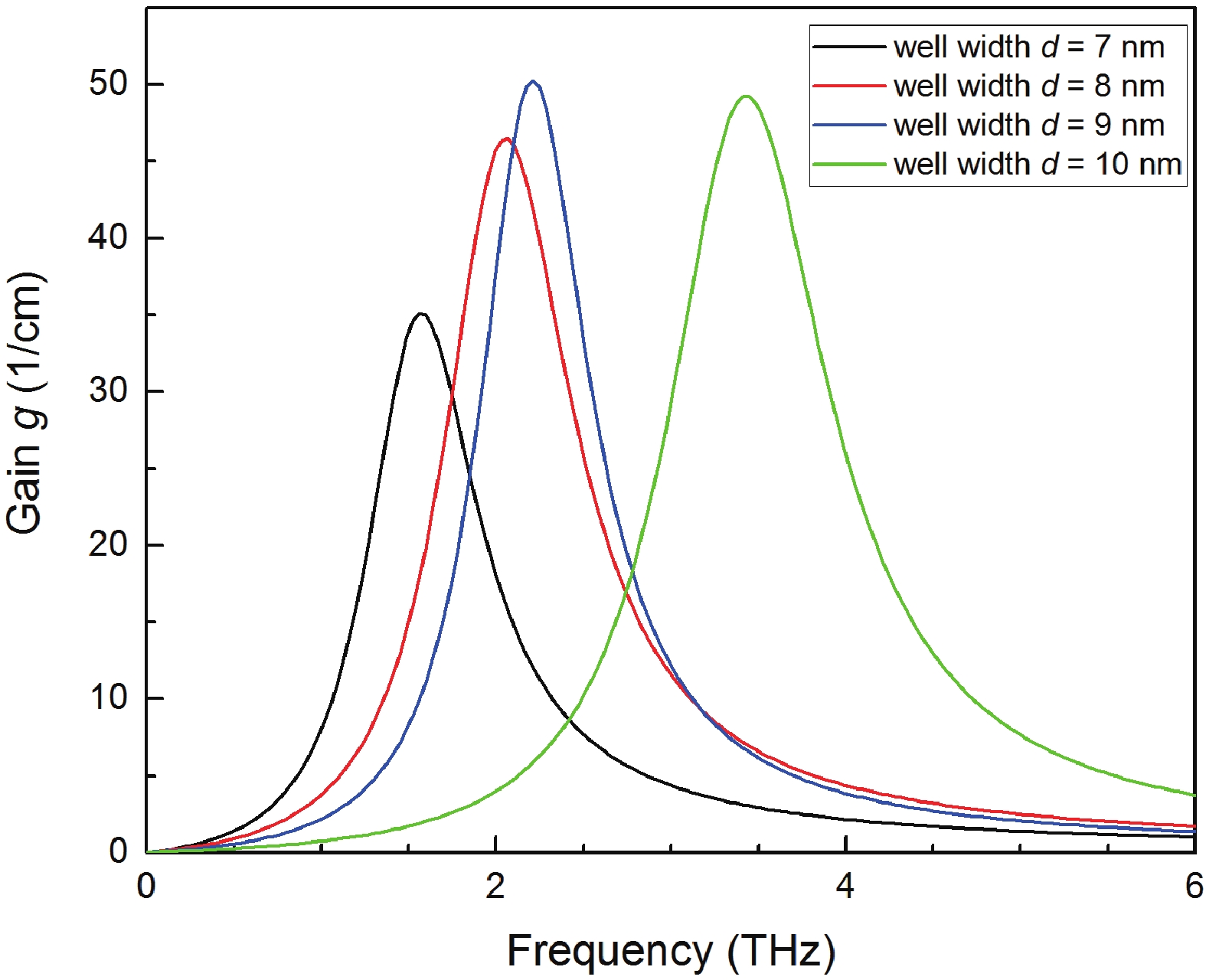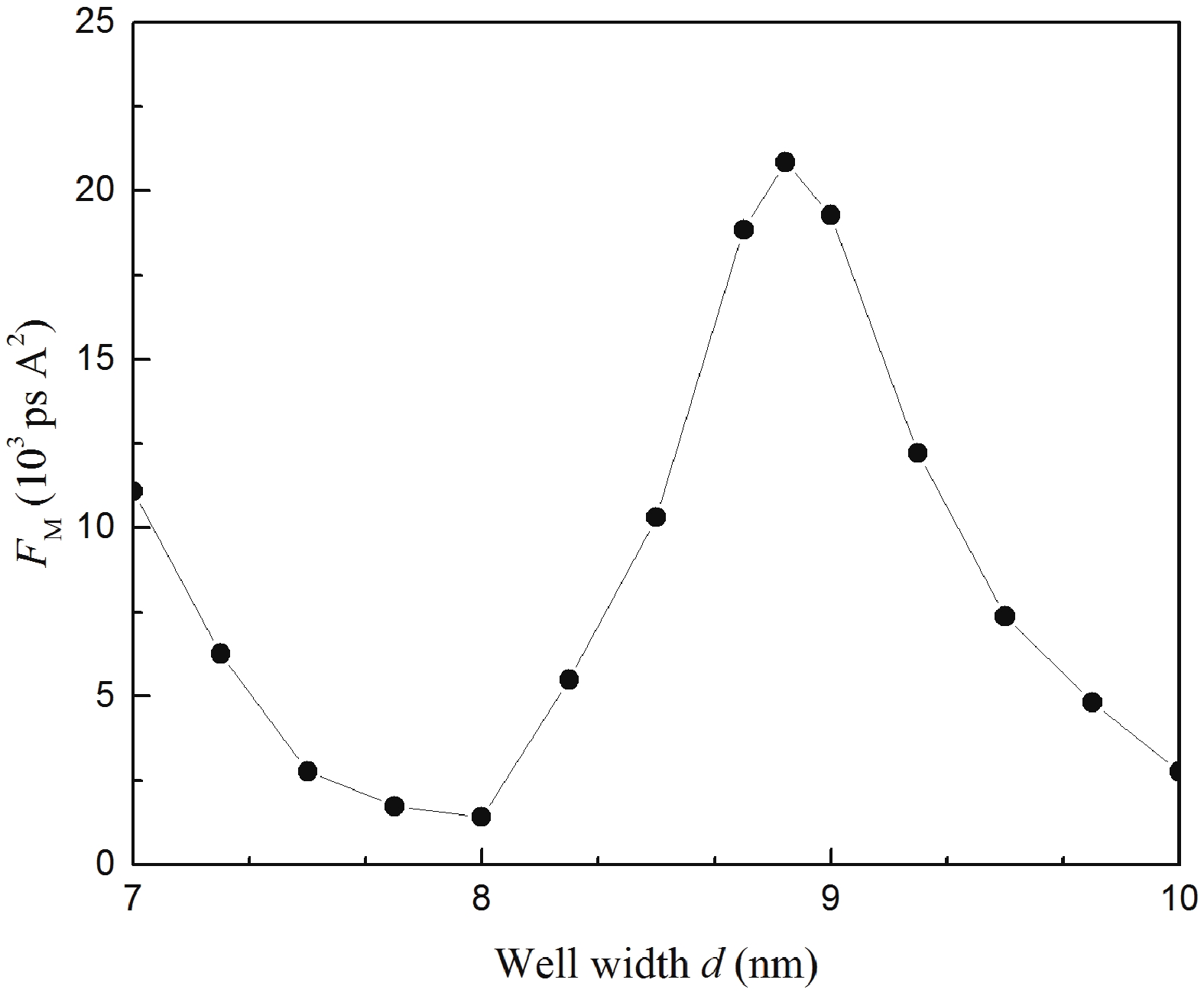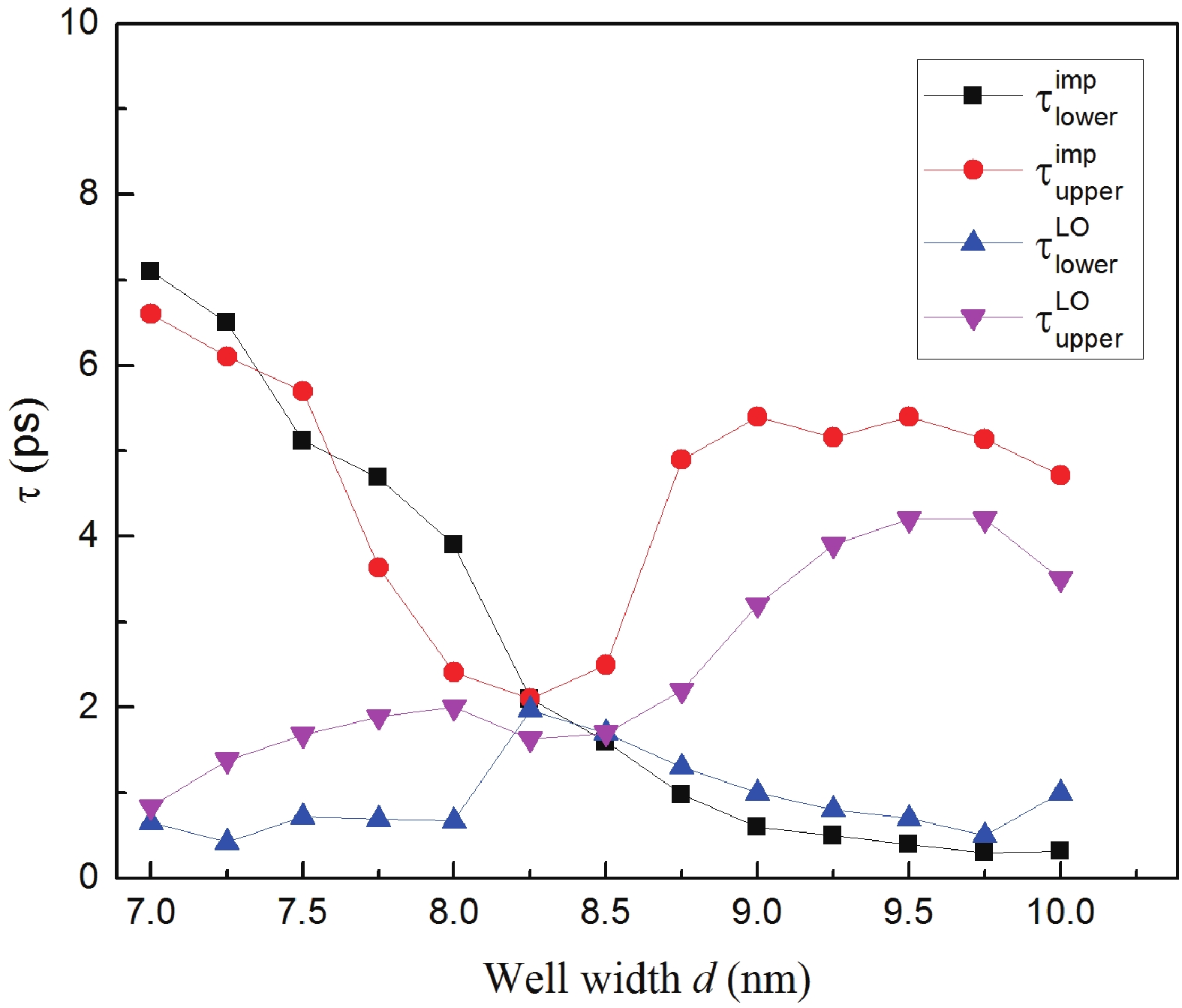| Citation: |
Alexander Sergeevich Dashkov, Semyon Andreevich Khakhulin, Dmitrii Alekseevich Shapran, Gennadii Fedorovich Glinskii, Nikita Andreevich Kostromin, Alexander Leonidovich Vasiliev, Sergey Nikolayevich Yakunin, Oleg Sergeevich Komkov, Evgeniy Viktorovich Pirogov, Maxim Sergeevich Sobolev, Leonid Ivanovich Goray, Alexei Dmitrievich Bouravleuv. An advanced theoretical approach to study super-multiperiod superlattices: theory vs experiments[J]. Journal of Semiconductors, 2024, 45(2): 022701. doi: 10.1088/1674-4926/45/2/022701
****
A. S. Dashkov, S. A. Khakhulin, D. A. Shapran, G. F. Glinskii, N. A. Kostromin, A. L. Vasiliev, S. N. Yakunin, O. S. Komkov, E. V. Pirogov, M. S. Sobolev, L. I. Goray, A. D. Bouravleuv. An advanced theoretical approach to study super-multiperiod superlattices: theory vs experiments[J]. J. Semicond, 2024, 45(2): 022701. doi: 10.1088/1674-4926/45/2/022701
|
An advanced theoretical approach to study super-multiperiod superlattices: theory vs experiments
DOI: 10.1088/1674-4926/45/2/022701
More Information
-
Abstract
A new theoretical method to study super-multiperiod superlattices has been developed. The method combines the precision of the 8-band kp-method with the flexibility of the shooting method and the Monte Carlo approach. This method was applied to examine the finest quality samples of super-multiperiod Al0.3Ga0.7As/GaAs superlattices grown by molecular beam epitaxy. The express photoreflectance spectroscopy method was utilized to validate the proposed theoretical method. For the first time, the accurate theoretical analysis of the energy band diagram of super-multiperiod superlattices with experimental verification has been conducted. The proposed approach highly accurately determines transition peak positions and enables the calculation of the energy band diagram, transition energies, relaxation rates, and gain estimation. It has achieved a remarkably low 5% error compared to the commonly used method, which typically results in a 25% error, and allowed to recover the superlattice parameters. The retrieved intrinsic parameters of the samples aligned with XRD data and growth parameters. The proposed method also accurately predicted the escape of the second energy level for quantum well thicknesses less than 5 nm, as was observed in photoreflectance experiments. The new designs of THz light-emitting devices operating at room temperature were suggested by the developed method. -
References
[1] Herman M A. Semiconductor superlattices. Berlin: Akademie-Verlag, 1986[2] Xing F, Ji G, Li Z, et al. Preparation, properties and applications of two-dimensional superlattices. Mater Horiz, 2023, 10(3), 722 doi: 10.1039/D2MH01206E[3] Jansen M, Tisdale W A, Wood V. Nanocrystal phononics. Nat Mater, 2023, 22(2), 161 doi: 10.1038/s41563-022-01438-4[4] Khalatpour A, Paulsen A K, Deimert C, et al. High-power portable terahertz laser systems. Nat Photonics, 2021, 15(1), 16 doi: 10.1038/s41566-020-00707-5[5] Gmachl C, Capasso F, Sivco D L, et al. Recent progress in quantum cascade lasers and applications. Rep Prog Phys, 2001, 64(11), 1533 doi: 10.1088/0034-4885/64/11/204[6] Mattsson M O, Simkó M. Emerging medical applications based on non-ionizing electromagnetic fields from 0 Hz to 10 THz. Med Devices: Evid Res, 2019, 12, 347 doi: 10.2147/MDER.S214152[7] Baxter J B, Guglietta G W. Terahertz spectroscopy. Anal Chem, 2011, 83(12), 4342 doi: 10.1021/ac200907z[8] Andronov A A, Ikonnikov A V, Maremianin K V, et al. THz stimulated emission from simple superlattice in positive differential conductivity region. Semicond, 2018, 52, 431 doi: 10.1134/S1063782618040048[9] Gerchikov L G, Dashkov A S, Goray L I, et al. Development of the design of super-multiperiod structures grown by molecular-beam epitaxy and emitting in the terahertz range. J Exp Theor Phys, 2021, 133, 161 doi: 10.1134/S1063776121070037[10] Belkin M A, Capasso F. New frontiers in quantum cascade lasers: high performance room temperature terahertz sources. Phys Scr, 2015, 90(11), 118002 doi: 10.1088/0031-8949/90/11/118002[11] Winge D O, Franckié M, Wacker A. Superlattice gain in positive differential conductivity region. AIP Adv, 2016, 6(4), 045025 doi: 10.1063/1.4948538[12] Goray L I, Pirogov E V, Svechnikov M V, et al. High-precision characterization of super-multiperiod AlGaAs/GaAs superlattices using X-ray reflectometry on a synchrotron source. Tech Phys Lett, 2021, 47(10), 757 doi: 10.1134/S1063785021080071[13] Goray L I, Pirogov E V, Sobolev M S, et al. Matched characterization of super-multiperiod superlattices. J Phys D, 2020, 53(45), 455103 doi: 10.1088/1361-6463/aba4d6[14] Dashkov A S, Gerchikov L G, Goray L I, et al. Sources of terahertz radiation on AlGaAs/GaAs superlattices. Bull Russ Acad Sci Phys, 2023, 87(6), 795 doi: 10.3103/S1062873823702179[15] Goray L I, Pirogov E V, Sobolev M S, et al. Matched X-ray reflectometry and diffractometry of super-multiperiod heterostructures grown by molecular beam epitaxy. Semicond, 2019, 53, 1910 doi: 10.1134/S1063782619140082[16] Goray L I, Pirogov E V, Sobolev M S, et al. Deep X-ray reflectometry of supermultiperiod A3B5 structures with quantum wells grown by molecular-beam epitaxy. Tech Phys, 2020, 65, 1822 doi: 10.1134/S1063784220110134[17] Wacker A. Semiconductor superlattices: a model system for nonlinear transport. Phys Rep, 2002, 357(1), 1 doi: 10.1016/S0370-1573(01)00029-1[18] Goray L I, Pirogov E V, Nikitina E V, et al. Photoluminescence and transmission electron microscopy methods for characterization of super-multiperiod A3B5 quantum well structures. Semicond, 2019, 53, 1914 doi: 10.1134/S1063782619140094[19] Misiewicz J, Sitarek P, Sek G, et al. Semiconductor heterostructures and device structures investigated by photoreflectance spectroscopy. Mater Sci, 2003, 21(3), 263[20] Komkov O S. Infrared photoreflectance of III–V semiconductor materials. Phys Solid State, 2021, 63, 1181 doi: 10.1134/S1063783421080126[21] Rogowicz E, Kopaczek J, Polak M P, et al. Carrier dynamics in (Ga, In)(Sb, Bi)/GaSb quantum wells for laser applications in the mid-infrared spectral range. Sci Rep, 2022, 12(1), 12961 doi: 10.1038/s41598-022-16966-x[22] Cretì A, Prete P, Lovergine N, et al. Enhanced optical absorption of GaAs near-band-edge transitions in GaAs/AlGaAs core–shell nanowires: implications for nanowire solar cells. ACS Appl Nano Mater, 2022, 5(12), 18149 doi: 10.1021/acsanm.2c04044[23] Goryacheva V D, Mironova M S, Komkov O S. Investigation of GaAs/AlGaAs superlattice by photoreflectance method. J Phys: Conf Ser, 2018, 1038(1), 012124 doi: 10.1088/1742-6596/1038/1/012124[24] Kudrawiec R, Se̢k G, Ryczko K, et al. Photoreflectance investigations of oscillator strength and broadening of optical transitions for GaAsSb–GaInAs/GaAs bilayer quantum wells. Appl Phys Lett, 2004, 84(18), 3453 doi: 10.1063/1.1737065[25] Pikhtin A N, Komkov O S, Bugge F. Effect of electric field on the probability of optical transitions in InGaAs/GaAs quantum wells observed by photo- and electroreflectance methods. Phys Status Solidi, 2005, 202(7), 1270 doi: 10.1002/pssa.200460912[26] Rygała M, Ryczko K, Smołka T, et al. Investigating the physics of higher-order optical transitions in InAs/GaSb superlattices. Phys Rev B, 2021, 104(8), 085410 doi: 10.1103/PhysRevB.104.085410[27] Shanabrook B V, Glembocki O J, Beard W T. Photoreflectance modulation mechanisms in GaAs-AlxGa1-xAs multiple quantum wells. Phys Rev B, 1987, 35(5), 2540 doi: 10.1103/PhysRevB.35.2540[28] Ferizović D, Peng L, Sultana H, et al. Photoreflectance spectroscopy study of a strained-layer CdTe/ZnTe superlattice. J Appl Phys, 2011, 110(9), 093703 doi: 10.1063/1.3657785[29] Motyka M, Janiak F, Misiewicz J, et al. Determination of energy difference and width of minibands in GaAs/AlGaAs superlattices by using Fourier transform photoreflectance and photoluminescence. Opto−Electron Rev, 2011, 19(2), 151 doi: 10.2478/s11772-011-0021-7[30] Janiak F, Dyksik M, Motyka M, et al. Advanced optical characterization of AlGaAs/GaAs superlattices for active regions in quantum cascade lasers. Opt Quantum Electron, 2015, 47, 945 doi: 10.1007/s11082-014-9991-2[31] Hosea T J C. Estimating critical-point parameters of modulated reflectance spectra. Phys Status Solidi B, 1995, 189(2), 531 doi: 10.1002/pssb.2221890221[32] Jirauschek C, Kubis T. Modeling techniques for quantum cascade lasers. Appl Phys Rev, 2014, 1(1), 011307 doi: 10.1063/1.4863665[33] Vukmirović N, Wang L W. Quantum dots: theory. In comprehensive nanoscience and technology. London: Academic Press, 2011[34] Glinskii G F, Lakisov V A, Dolmatov A G, et al. Multiband coupling and electronic structure of short-period (GaAs)n/(AlAs)n (001) superlattices. Nanotechnology, 2000, 11(4), 233 doi: 10.1088/0957-4484/11/4/308[35] Glinskii G F, Mironova M S. Effective Hamiltonians for heterostructures based on direct-gap III–V semiconductors. The kp perturbation theory and the method of invariants. Semicond, 2014, 48, 1324 doi: 10.1134/S106378261410008X[36] Mironova M S, Komkov O S, Firsov D D, et al. Determination of InSb/AlInSb quantum well energy spectrum. J Phys: Conf Ser, 2014, 541(1), 012085 doi: 10.1088/1742-6596/541/1/012085[37] Dashkov A S, Kostromin N A, Babichev A V, et al. Simulation of the energy-band structure of superlattice of quaternary alloys of diluted nitrides. Semicond, 2023, 57(3), 207 doi: 10.21883/SC.2023.03.56237.4163[38] Liu P Q, Hoffman A J, Escarra M D, et al. Highly power-efficient quantum cascade lasers. Nat Photonics, 2010, 4(2), 95 doi: 10.1038/nphoton.2009.262[39] Callebaut H, Hu Q. Importance of coherence for electron transport in terahertz quantum cascade lasers. J Appl Phys, 2005, 98(10), 104505 doi: 10.1063/1.2136420[40] Matyas A, Lugli P, Jirauschek C. Role of collisional broadening in Monte Carlo simulations of terahertz quantum cascade lasers. Appl Phys Lett, 2013, 102(1), 011101 doi: 10.1063/1.4773516[41] Ando T, Fowler A B, Stern F. Electronic properties of two-dimensional systems. Rev Mod Phys, 1982, 54(2), 437 doi: 10.1103/RevModPhys.54.437[42] Pereira Jr M F, Lee S C, Wacker A. Controlling many-body effects in the midinfrared gain and terahertz absorption of quantum cascade laser structures. Phys Rev B, 2004, 69(20), 205310 doi: 10.1103/PhysRevB.69.205310[43] Tamosiunas V, Zobl R, Ulrich J, et al. Terahertz quantum cascade lasers in a magnetic field. Appl Phys Lett, 2003, 83(19), 3873 doi: 10.1063/1.1626018[44] Huang W, Rassel S S, Li L, et al. A unified figure of merit for interband and intersubband cascade devices. Infrared Phys Technol, 2019, 96, 298 doi: 10.1016/j.infrared.2018.11.033[45] Laturia A A, Van de Put M L, Vandenberghe W G. Generation of empirical pseudopotentials for transport applications and their application to group IV materials. J Appl Phys, 2020, 128(3), 034306 doi: 10.1063/5.0009838[46] Lee B G, Luo J W, Neale N R, et al. Quasi-direct optical transitions in silicon nanocrystals with intensity exceeding the bulk. Nano Lett, 2016, 16(3), 1583 doi: 10.1021/acs.nanolett.5b04256[47] Xiong J X, Guan S, Luo J W, et al. Emergence of strong tunable linear Rashba spin-orbit coupling in two-dimensional hole gases in semiconductor quantum wells. Phys Rev B, 2021, 103(8), 085309 doi: 10.1103/PhysRevB.103.085309[48] Avdeev I D, Belolipetsky A V, Ha N N, et al. Absorption of Si, Ge, and SiGe alloy nanocrystals embedded in SiO2 matrix. J Appl Phys, 2020, 127(11), 114301 doi: 10.1063/1.5139960[49] Glinskii G F, Mironova M S. An 8-band Kane model for quantum-sized heterostructures based on cubic semiconductors A3B5. J Phys: Conf Ser, 2013, 572(1), 012052 doi: 10.1088/1742-6596/572/1/012052[50] Glinskii G F, Andrianov A V, Sreseli O M, et al. Terahertz electroluminescence originating from spatially indirect intersubband transitions in a GaAs/AlGaAs quantum-cascade structure. Semicond, 2005, 39, 1182 doi: 10.1134/1.2085267[51] Glinskii G F. A simple numerical method for determining the energy spectrum of charge carriers in semiconductor heterostructures. Tech Phys Lett, 2018, 44, 232 doi: 10.1134/S1063785018030161[52] Glinskii G F, Shapran D A. The energy spectrum and wave functions of electrons in tunnel-coupled spherical InAs/GaAs quantum dots. Tech Phys Lett, 2020, 46, 272 doi: 10.1134/S1063785020030219[53] Firsov D D, Komkov O S, Solov’ev V A, et al. Infrared photoreflectance of InSb-based two-dimensional nanostructures. J Opt Soc Am B, 2019, 36(4), 910 doi: 10.1364/JOSAB.36.000910[54] Vurgaftman I, Meyer J R, Ram-Mohan L R. Band parameters for III–V compound semiconductors and their alloys. J Appl Phys, 2001, 89(11), 5815 doi: 10.1063/1.1368156[55] Williams B S. Terahertz quantum-cascade lasers. Nat Photonics, 2007, 1(9), 517 doi: 10.1038/nphoton.2007.166 -
Proportional views





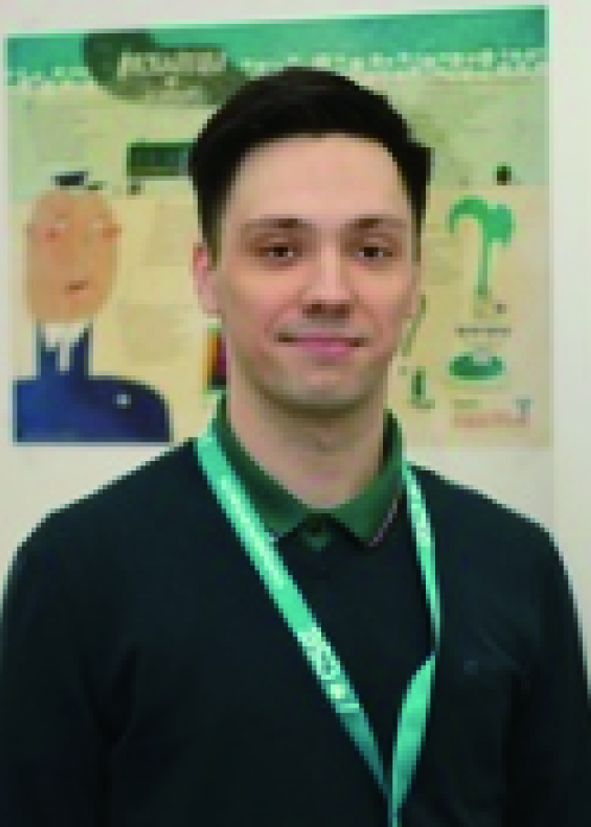 Alexander Sergeevich Dashkov Alexander S. Dashkov got his bachelor degree in 2017 from Peter the Great St. Petersburg Polytechnic University and his master’s degree in 2019 from Alferov University of St. Petersburg. He is currently a PhD candidate at Saint Petersburg Electrotechnical University "LETI" under the supervision of Prof. Leonid Goray. His research focuses on numerical simulations of quantum cascade and super-multiperiod superlattice structures.
Alexander Sergeevich Dashkov Alexander S. Dashkov got his bachelor degree in 2017 from Peter the Great St. Petersburg Polytechnic University and his master’s degree in 2019 from Alferov University of St. Petersburg. He is currently a PhD candidate at Saint Petersburg Electrotechnical University "LETI" under the supervision of Prof. Leonid Goray. His research focuses on numerical simulations of quantum cascade and super-multiperiod superlattice structures.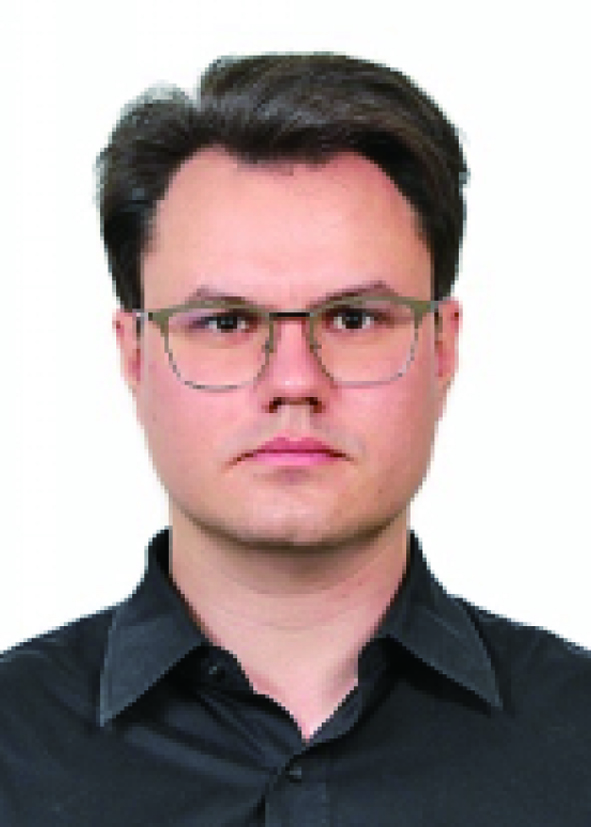 Dmitrii Alekseevich Shapran Dmitry A. Shapran completed his master's degree in Electronics and Nanoelectronics at St. Petersburg State Electrotechnical University "LETI" in 2021. Currently, he is a graduate student of Professor Gennadii Glinskii. The area of research is the theory of semiconductor nanoheterostructures based on compounds of groups III-V.
Dmitrii Alekseevich Shapran Dmitry A. Shapran completed his master's degree in Electronics and Nanoelectronics at St. Petersburg State Electrotechnical University "LETI" in 2021. Currently, he is a graduate student of Professor Gennadii Glinskii. The area of research is the theory of semiconductor nanoheterostructures based on compounds of groups III-V.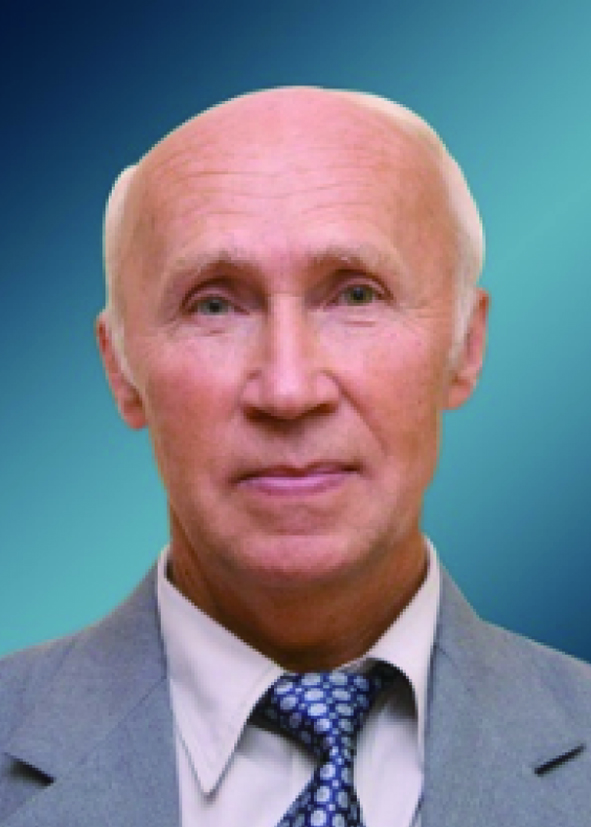 Gennadii Fedorovich Glinskii Gennadii F. Glinskii is a Doctor of Physical and Mathematical Sciences, Professor of the Department of Micro- and Nanoelectronics of St. Petersburg State Electrotechnical University "LETI". Area of scientific interests: theory of semiconductor nanoheterostructures and photonic crystals.
Gennadii Fedorovich Glinskii Gennadii F. Glinskii is a Doctor of Physical and Mathematical Sciences, Professor of the Department of Micro- and Nanoelectronics of St. Petersburg State Electrotechnical University "LETI". Area of scientific interests: theory of semiconductor nanoheterostructures and photonic crystals.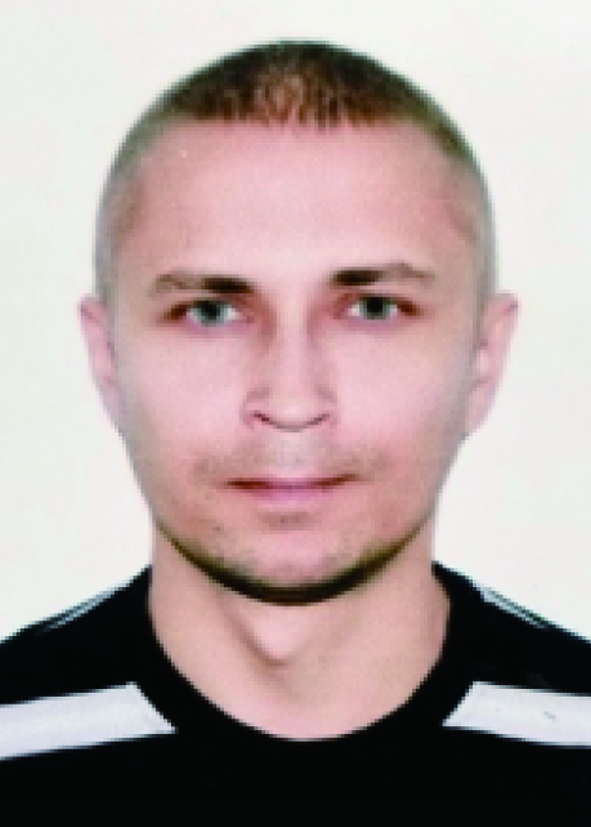 Evgeniy Viktorovich Pirogov Evgeny V. Pirogov got his bachelor's degree in 2004 and a master's degree in 2006 from the Electrotechnical University "LETI" in St. Petersburg, Russia. Currently he is a researcher at the Laboratory of Nanoelectronics at the Alferov University. His research focuses on MBE growth, A3B5 heterostructures and their properties.
Evgeniy Viktorovich Pirogov Evgeny V. Pirogov got his bachelor's degree in 2004 and a master's degree in 2006 from the Electrotechnical University "LETI" in St. Petersburg, Russia. Currently he is a researcher at the Laboratory of Nanoelectronics at the Alferov University. His research focuses on MBE growth, A3B5 heterostructures and their properties.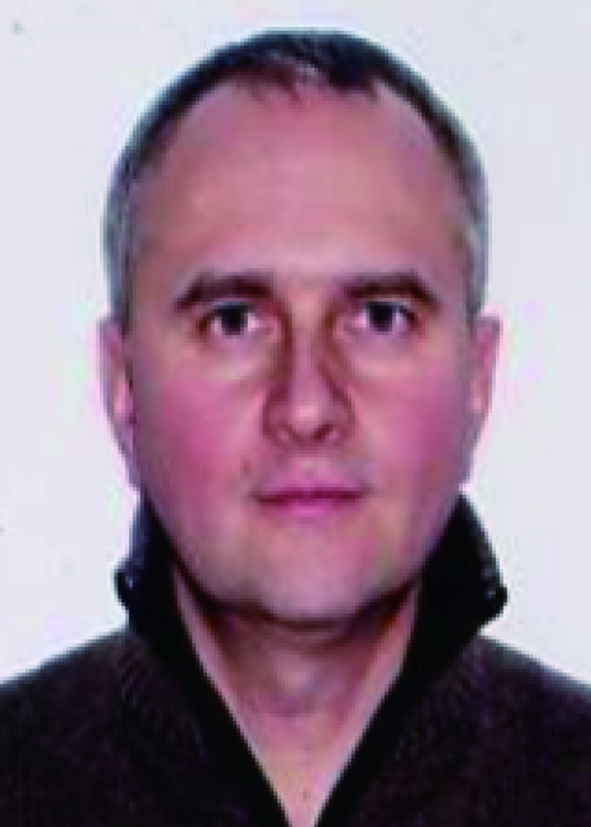 Leonid Ivanovich Goray Leonid I. Goray is a Principal Researcher & Professor at Alferov University, 2008−present. He is a Principal Researcher at Saint Petersburg Electrotechnical University "LETI", 2022−present. Leonid Goray received a Ph.D. in Physics and Mathematics in Institute for Analytical Instrumentation (IAI, RAS) in 2004, and received a Dr. in Science in IAI in 2011. He has a strong background in the electromagnetic theory of diffraction and scattering by diffraction gratings, rough mirrors, and nanocrystals; Helmholtz equation, Schrodinger equation, non-linear continuum equation, neuromorphic computing, machine learning: 150+ publications, 7 patents, 2 registered software.
Leonid Ivanovich Goray Leonid I. Goray is a Principal Researcher & Professor at Alferov University, 2008−present. He is a Principal Researcher at Saint Petersburg Electrotechnical University "LETI", 2022−present. Leonid Goray received a Ph.D. in Physics and Mathematics in Institute for Analytical Instrumentation (IAI, RAS) in 2004, and received a Dr. in Science in IAI in 2011. He has a strong background in the electromagnetic theory of diffraction and scattering by diffraction gratings, rough mirrors, and nanocrystals; Helmholtz equation, Schrodinger equation, non-linear continuum equation, neuromorphic computing, machine learning: 150+ publications, 7 patents, 2 registered software.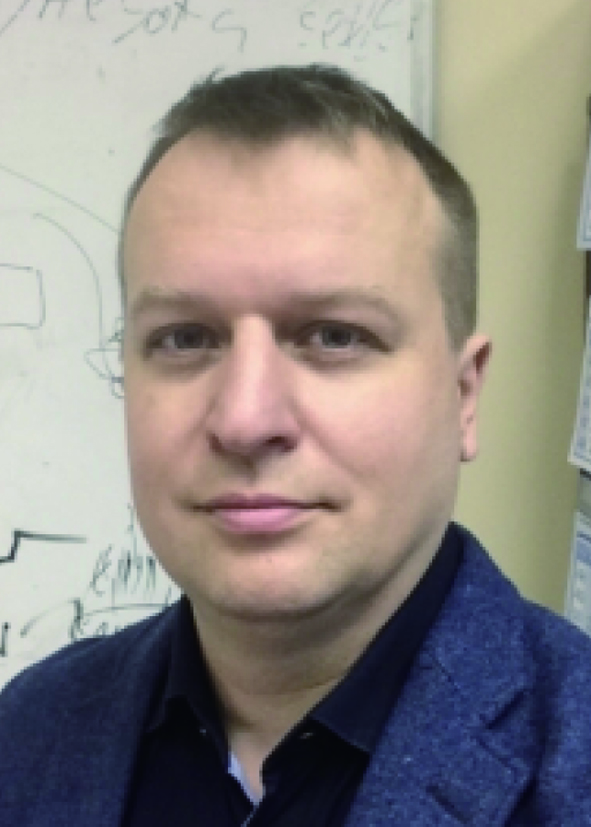 Alexei Dmitrievich Bouravleuv Alexei D. Bouravleuv received the Ph.D. degree from Ioffe Institute RAS in 2002 and his Dr. Sc. degree from Institute for Analytical Instrumentation RAS, St. Petersburg, Russia, in 2014. He is currently a Head of Micro- and Nano-electronics laboratory with LETI University, St. Petersburg, Russia. His research interests include the study of the growth processes of different semiconductor nanostructures and their properties.
Alexei Dmitrievich Bouravleuv Alexei D. Bouravleuv received the Ph.D. degree from Ioffe Institute RAS in 2002 and his Dr. Sc. degree from Institute for Analytical Instrumentation RAS, St. Petersburg, Russia, in 2014. He is currently a Head of Micro- and Nano-electronics laboratory with LETI University, St. Petersburg, Russia. His research interests include the study of the growth processes of different semiconductor nanostructures and their properties.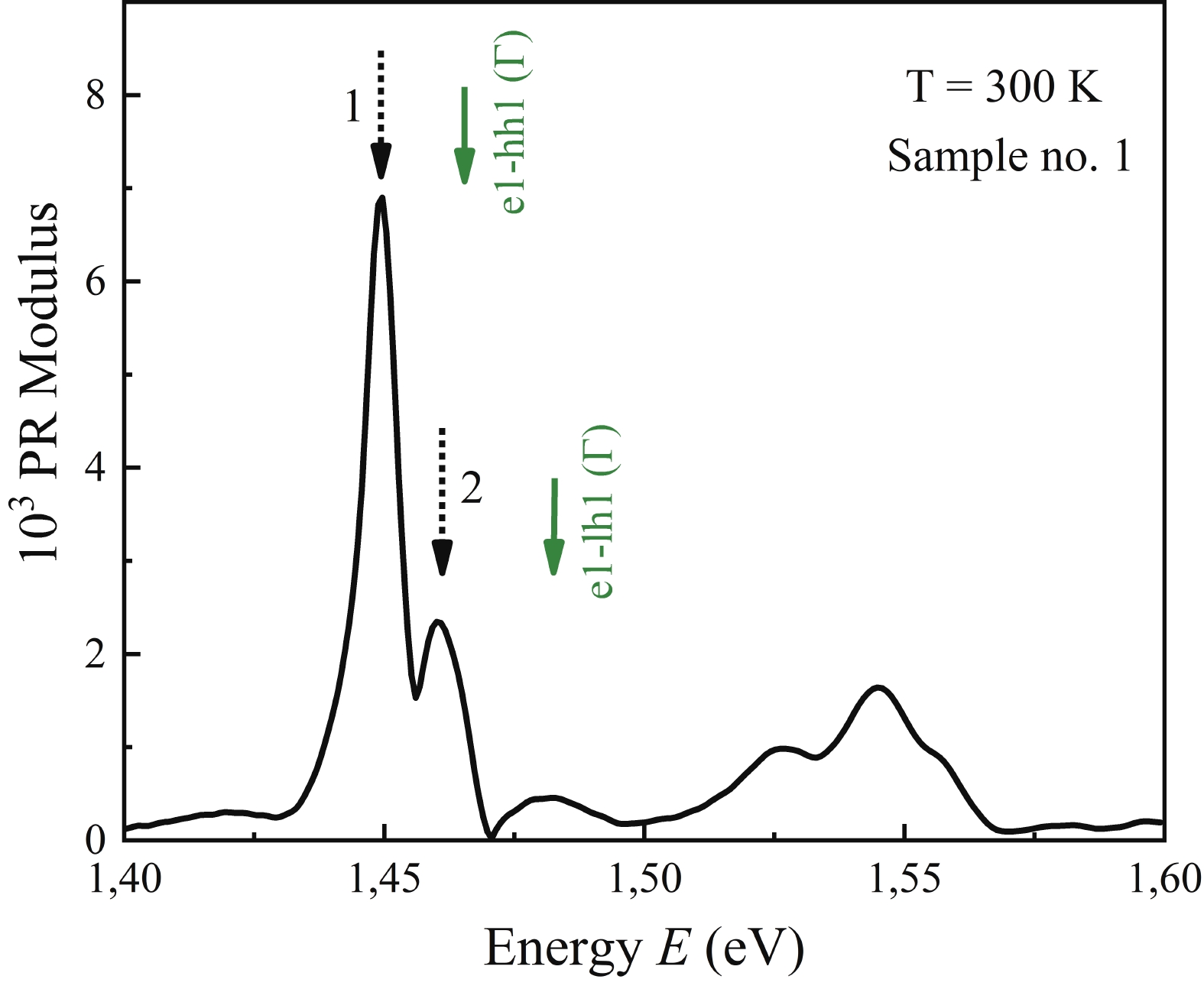
 DownLoad:
DownLoad:
